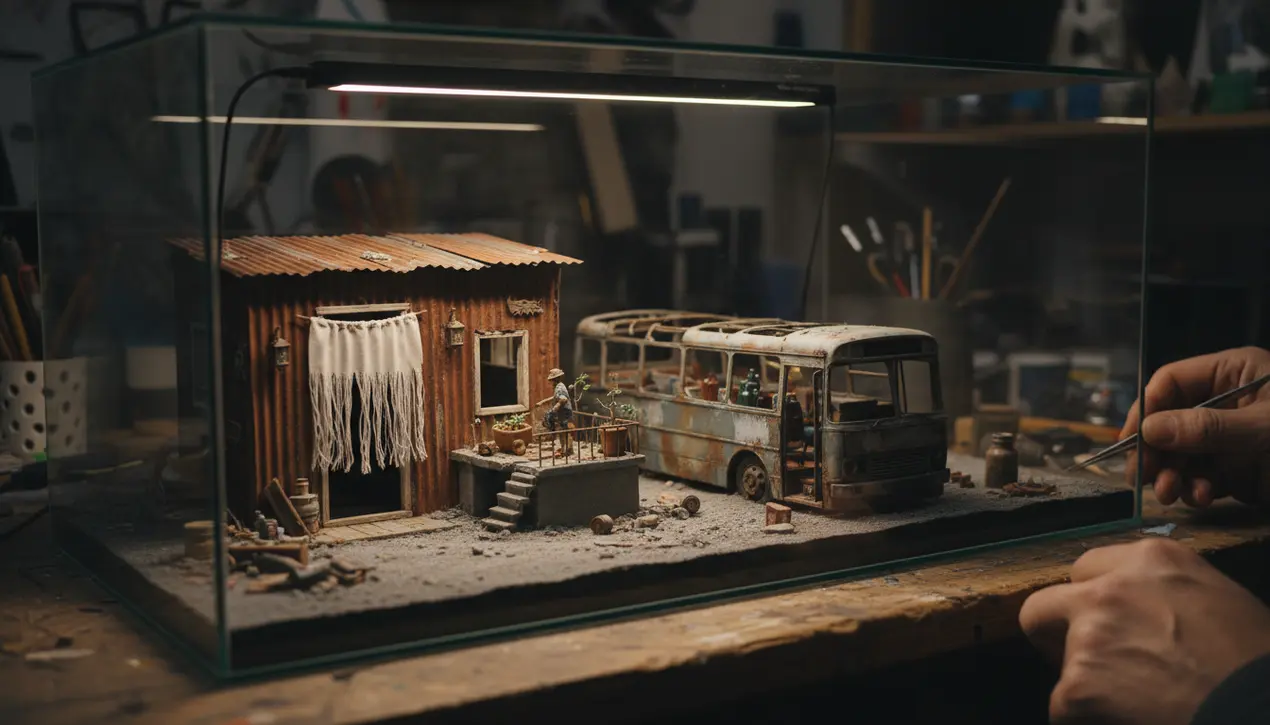
Entertainmenttheatre & artsArt Exhibitions
Simon Laveuve's Miniature Visions of a Fallen World
AM
Amanda Lewis
2 days ago7 min read5 comments
In the silent, dust-choked stillness of a civilization long gone, a solitary shopping cart rests permanently in a supermarket aisle, its wheels seized by decades of decay. A child's bicycle lies toppled near a disintegrating sidewalk, a heartbreaking artifact of a life interrupted.These are not frames from a major motion picture but the intricately crafted, post-apocalyptic dioramas of French artist Simon Laveuve, constructed in a compelling 1/24 and 1/35 scale. His creations elevate model-making into a form of hyper-realistic, three-dimensional narrative, where each fleck of rust, every fissure in the asphalt, and each invasive weed functions as a deliberate syllable in a silent story of human disappearance.Laveuve does not merely assemble miniatures; he stages microscopic dramas, casting the observer as the lone archaeologist sifting through the remnants of our own potential demise. The emotional gravity of these scenes is profound, echoing the potent, dialogue-free introductions of films such as 'Wall-E,' where the setting itself emerges as the protagonist, murmuring tales of extinction and endurance.His selected scale is brilliantly effective; it is small enough to feel intensely personal, like gazing into a cursed dollhouse, yet it preserves a necessary objectivity, presenting the ruin as a phenomenon to be studied. This duality forms the heart of his art's impact—it is simultaneously compassionate and dispassionately observational.A clear lineage connects Laveuve’s art to the historic tradition of the Dutch *vanitas* still-life, which employed symbols of luxury and enjoyment to underscore life's fleeting nature and the certainty of death. In place of skulls and dying blooms, Laveuve utilizes an abandoned video game console, a decaying armchair, or a collection of vintage cars being slowly consumed by vegetation.His is a *vanitas* for the modern era, a memento mori for a society defined by consumerism and technology. The genius of his work resides not just in the sculptural precision but in the masterful environmental narrative.He feels no need to depict the actual cataclysm—the weapon, the plague, the ecological disaster—because its specter lingers in every meticulously arranged detail. The story exists in the emptiness, in the unanswerable questions that permeate the scene: Who were the inhabitants? What became of them? Why was this object left behind? This approach is a signature of advanced cinematic world-building, where implication often proves more powerful than exposition.By concentrating on the tranquil aftermath, Laveuve conjures a more profound and persistent sense of sorrow and unease than any portrayal of violent destruction might achieve. His art stands as a quiet, stunning, and alarming reflection on the vulnerability of our societal structures, a meticulously crafted prophecy articulated not with language, but with plaster, resin, and painstakingly layered pigment.
#Simon Laveuve
#miniature sculptures
#post-apocalyptic art
#dioramas
#art exhibition
#featured
Stay Informed. Act Smarter.
Get weekly highlights, major headlines, and expert insights — then put your knowledge to work in our live prediction markets.
Comments
Loading comments...
© 2025 Outpoll Service LTD. All rights reserved.